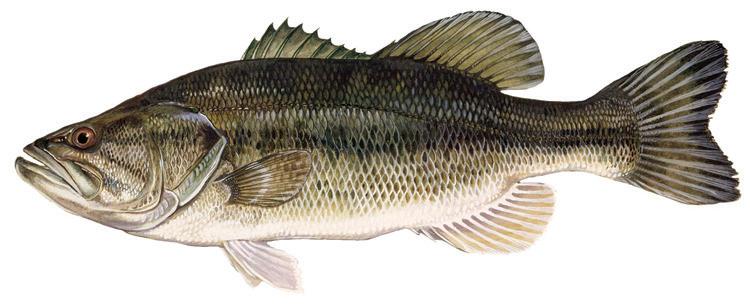
4 minute read
FISH STOCKING IN SWEDE CREEK LAKE
FISH STOCKING
in Swede Creek Lake
Advertisement
By Shane Reynolds, Outdoor Recreation Director and Outfitter

Swede Creek Lake is an outstanding resource and amenity at Cordillera Ranch, and during my 16 years on the Ranch, we have watched the fish populations remain fairly healthy. In 2015, we did a fish survey in Swede Creek Lake to get an estimate of the health and numbers of fish and that report found a very healthy population of bass and several species of sunfish. Over the years, we have caught the following species out of Swede Creek Lake: largemouth or black bass, Guadalupe or spotted bass, rock bass, red breast sun fish, long ear sunfish, green sunfish, bluegill, channel catfish, striped bass and a few turtle species that include the red-ear slider, Texas river cooter and softshell turtle. We have also seen nutra rat and beaver using the lake as home.

A properly stocked and maintained pond or lake offers the opportunity for countless hours of fishing and great memories with family and friends. A well-managed pond can also benefit the ecology of the area around it. However, correctly stocking a pond requires an understanding of environmental and maintenance factors that influence its vitality. We are excited to announce that we recently restocked Swede Creek Lake and the future of bass fishing is looking outstanding! A reminder — Swede Creek Lake is a private amenity for property owners in Cordillera Ranch and it’s a CATCH & RELEASE lake.
Knowing which fish species you should and should not introduce into your pond, as well as integrating the right size of fish into the water, will all ultimately impact the enjoyment you get from fishing. Every pond is different. Factors like size, location and cost of fish to stock will vary. Generally, the best fish to stock a small pond with are those that are well-suited to your climate, recreational fishing and that create a balanced ecosystem. A 3-to-1 prey-to-predator ratio is ideal, as this will maintain consistent population levels and will help keep the prevalence of weeds, insects, worms and algae under control.
Though some fish are better for specific pond sizes than others, three of the best fish to stock at Swede Creek Lake are:
The fathead minnow has a rounded snout and short rounded fins. There is a dark spot at the base of the tail fin, and sometimes a blotch on the anterior portion of the dorsal fin. As with many other minnows, there is a darkening along the midline of the back. The fathead minnow is a stream fish, able to tolerate a wide range of environmental conditions, including high temperatures, low oxygen levels and high turbidities.
When considering fish habitats, it’s vital to remember that habitat is more than a home — it’s a community. All fish, regardless of which species you’re stocking for sport fishing, require adequate habitats. Swede Creek Lake is an ideal habitat for largemouth bass and that’s why we continue to see a healthy population in there. These fish prefer specific habitats, and their needs change as they grow. For example, bluegill are excellent feeder fish, but babies and adults require two different habitats. Swede Creek Lake is an ideal location for growing big bass! The Cordillera Ranch Property Owners Association maintenance team is also treating the lake to manage the invasive weed found in there — Eurasian watermilfoil.
Many landowners believe simply adding fish to a pond will result in a healthy and sustainable fish population. But a planned
approach, starting with creating a good environment and a strong food-chain, will set the pond up for successful establishment and fishing opportunities. A planned approach takes time — up to a few years — before sportfish like largemouth bass are big enough to catch. But like many things in life, good things come to those who wait. The Florida strain of largemouth bass we stocked will grow fast and get big and we have some fun fishing times ahead of us.
As a reminder to our Club members, our Outfitter Services include guided fishing services, live bait sales and fishing equipment rental for all your fishing needs.
LARGEMOUTH BASS:
Largemouth bass are a top choice for pond stocking, chiefly because they’re so well-liked among anglers. These fish reproduce rapidly within a pond environment. Largemouth bass are predators and will hunt prey fish in your pond, increasing their weight and making them a challenging fish to reel in. Florida largemouth bass are the most popular game fish on the market. Pure Florida genetics are preferred by biologists and fishery management professionals across the South due to their genetic potential to become trophies. Pure strain individuals tend to breed true, so stocking pure Florida bass fingerling is the best way to ensure genetic consistency (and trophy potential) down the road.
BLUEGILL:
Another sport and prey fish similar to largemouth bass, bluegill are great fish to catch and use as prey for the bass. Bluegill also populate faster than bass, which allows you to catch and release more of these fish. The Coppernose is a subspecies of bluegill native to the extreme southeast United States. It is now commonly stocked in ponds throughout the south. Coppernose bluegill look similar to native bluegill, however the Coppernose can be identified by the copper-colored band around the nose. They also have similar diets consisting of insects, crustaceans and other aquatic invertebrates. Shane Reynolds is the Outdoor Recreation Director and Outfitter at The Clubs of Cordillera Ranch. He can be reached at outfitter@cordilleraranch.com and 210.616.6051, or at the Cordillera Ranch Outfitter Center at 830.336.4823.













